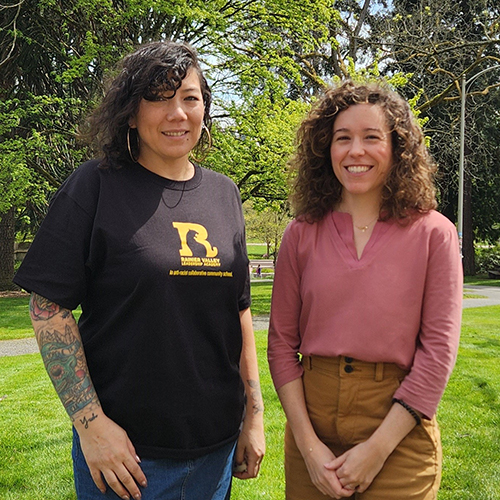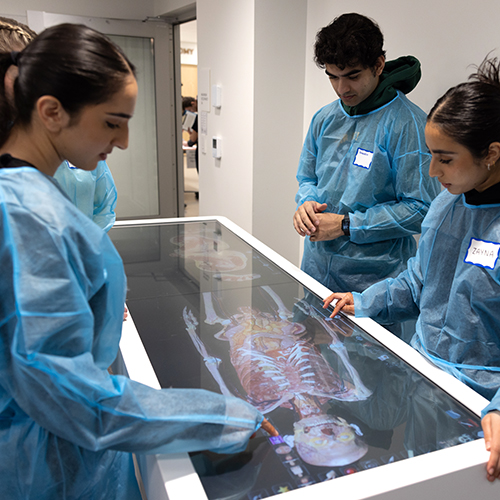When Gavin Hill headed for camp this summer, he left his bathing suit at home. Likewise his baseball cap and suntan lotion. What he did bring was his mother.
Gavin, age six, was a participant in the Department of Speech and Hearing Sciences’ (SPHSC) Communication Camp. Now in its second year, the camp is an opportunity for children to work intensively on communication skills. The children’s needs vary widely, from mastering the sounds of speech to the art of effective social communication with peers. For Gavin, a return camper, the emphasis was on learning to problem solve in social situations and provide accurate information.

Communication Camp meets at SPHSC’s Speech and Hearing Clinic for four weeks, with four individual and two group sessions each week. (A similar summer intensive program is offered for adults, most with stroke-related challenges.) The therapists are graduate students in SPHSC’s medical speech and language pathology program.
“There’s a delicate dance that has to occur in the Speech and Hearing Clinic,” says Nancy Alarcon, clinic director and SPHSC senior lecturer. “The two parts of our mission are educational preparation for our students and service to the community. The clinic must serve both groups. While our services are a huge benefit to the community, the clinic is also a lab attached to courses in Speech and Hearing Sciences, bringing the coursework to life.”
Graduate students gain experience in the clinic year round, but during communication camp the schedule is more intensive. While clients normally visit weekly, camp participants visit almost daily, with group visits added to the mix. That requires more preparation, more frequent assessment, and—with group sessions—a broader range of activities to plan.

Clinical supervisors observe all sessions from a neighboring room through a one-way mirror and provide feedback. Family members may also observe the sessions, an opportunity that Gavin’s mother, Christine Hill, found invaluable.
“At other clinics, you wait in the waiting room,” says Hill. “Here, the person who deals with Gavin the most—me—can observe along with the supervisor. I’ve had the supervisor explain what the graduate student is doing and the expected outcomes. It’s like parents are taking a course, understanding how to more effectively work with their kids.”
What Hill has observed during the sessions is a range of activities intended to help Gavin negotiate social interactions. These might include role playing with puppets or discussing a story about friendship. The group sessions, with four or five children, are an opportunity to practice new skills in a comfortable setting.
The challenge for group sessions, says Alarcon, is to bring together children with the right mix of communication needs. Careful prescreening is required to assess each child’s abilities.

Hill remembers being impressed by the rigorous screening. “We’d been to other groups where the kids weren’t paired very well,” she says. “But this clinic had input from Gavin’s school and had us videotape him. Then they had two intake sessions with Gavin to get a sense of his strengths and weaknesses. I was confident they were going to match the kids up appropriately for the group sessions.”
Clearly the camp gets a thumbs-up from mom. But what did Gavin think of it?
“He liked it,” says Hill. “He really did. Toward the end he would get fatigued, because they were working him hard, but I think that’s good. I wanted him to be stretched."
More Stories

Learning Through Storytelling
Through a UW-led storytelling workshop and course, English language learners in the Seattle area strengthened their language skills and built community.

The Impact of Anatomy Lessons
Anatomy for Change, a program for students underrepresented in healthcare careers, provides opportunities to spend time in an anatomy lab.

What the Sky Teaches Us
Brittany Kamai, an astrophysicist with knowledge of Pacific Islanders' Indigenous navigation using the sky, is teaching a new UW course, Pacific Indigenous Astrophysics.